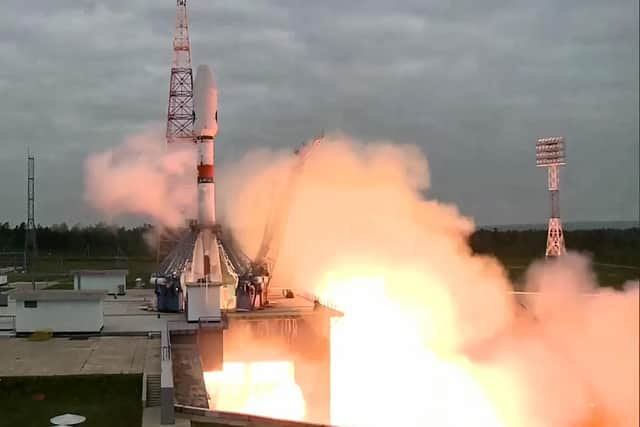Luna-25: lunar lander crashes into the Moon after spinning into an uncontrolled orbit
and live on Freeview channel 276
Luna-25 crashed into the Moon after it spun into an uncontrolled orbit. Roscosmos has reported that the craft, which was due to be the first ever to land on the Moon's South Pole, encountered an "abnormal situation" as it moved into its pre-landing orbit.
The Russian space agency said on Sunday (August 20) morning it had lost contact with the Luna-25 shortly after 2:57pm (11:57 GMT) on Saturday. The craft was launched on 11 August 2023, and was Russia's first Moon mission in almost 50 years.
Advertisement
Hide AdAdvertisement
Hide Ad

Initial findings showed that the 800kg "apparatus moved into an unpredictable orbit and ceased to exist as a result of a collision with the surface of the moon," Roscosmos said in a statement. A special commission will look into why the mission failed.
Roscosmos acknowledged the Luna-25 mission was risky and could fail. The craft launched from Vostochny Cosmodrome in the far eastern Amur region of Russia, and then successfully entered the moon's orbit on Wednesday (August 16). It was expected to make history by making a soft landing on Monday or Tuesday, just days before the Indian's craft touchdown.
The unmanned robot lander was set to explore a part of the Moon which scientists think could hold frozen water and precious elements. The frozen water in the rocks could be transformed into air and rocket fuel, potentially allowing for longer human trips.
Luna-25 was set to roam the Moon's south pole for a year, collecting samples of rock and dust as parts of the Moon's South Pole remain permanently in shadow - making finding water a possibility. No country has ventured into the Moon's South Pole before.
Advertisement
Hide AdAdvertisement
Hide AdAlthough short-lived, Luna-25 has already sent back images to Earth of itself in space, and the third deepest crater on the Moon's southern hemisphere - the Zeemna crater. In a few days, India's Chandrayaan-3, which was in a race with the Russian craft to get to the Moon's South Pole first, is due to land.
A spokesperson for the Indian space agency Isro described the Luna-25 crash as "unfortunate". "Every space mission is very risky and highly technical. It's unfortunate that Luna-25 has crashed," they told the BBC.
Comment Guidelines
National World encourages reader discussion on our stories. User feedback, insights and back-and-forth exchanges add a rich layer of context to reporting. Please review our Community Guidelines before commenting.
